I tested the new Dyson 360 Vis Nav robot vacuum — 3 things I like and 3 I don’t
I put the new Dyson 360 Vis Nav Robot Vacuum to the test — and it surprised me
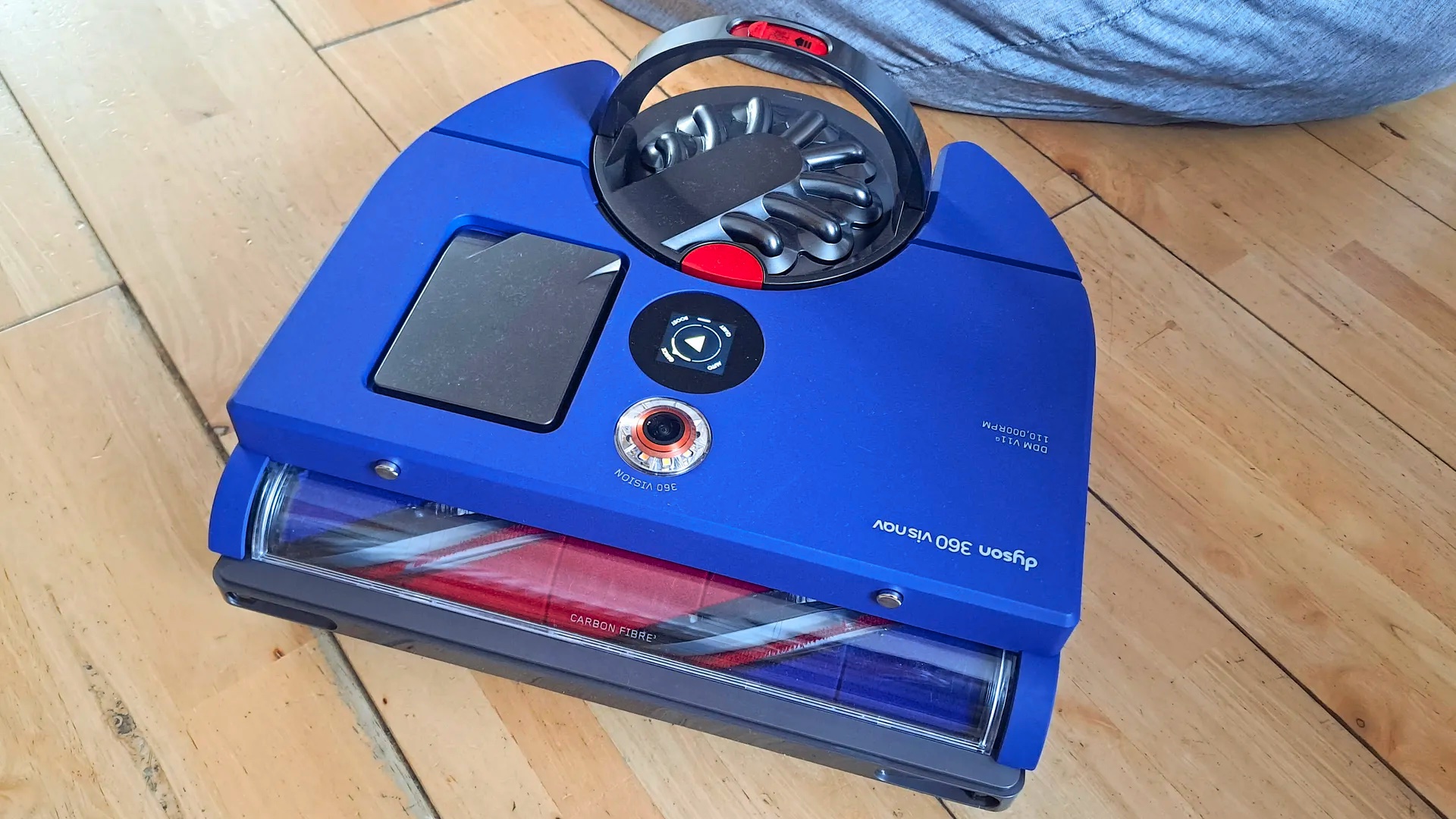
As a Homes writer, I’ve tested my fair share of the best vacuum cleaners over the years. And while there are plenty of quality brands I’d recommend, there is arguably one brand that has stood out above the rest — Dyson.
Renowned for its exceptional power and advanced, dust-detection technology, I’ve never been disappointed by my trusted Dyson vacuum cleaner. However, the company has had less success when it comes to the best robot vacuums. Dyson is making a return to the market with its latest Dyson 360 Vis Nav. I say ‘return’, as this is their third attempt at really cracking the category. And after seven years in the making, this new and improved model promises a more intelligent and user-friendly cleaning experience. Here are my first impressions, but you can read our full Dyson 360 Vis Nav review here.
After attending a Dyson 360 Vis Nav hands-on demo with one of Dyson’s floor tech engineers, the technology and specs certainly looked impressive: an advanced 360-degree vision system, powerful Hyperdymium motor, an additional 26 sensors to avoid obstacles and a triple-action brush bar.
What’s even more impressive are Dyson's claims that the 360 Vis Nav is about six times more powerful than any other robot vacuum on the market. Which for me, was always the one (and essential) factor I found to be disappointing in robot vacuums.
But fancy tech talk aside, does the Dyson Vis Nav live up to the specs? During the demo, I watched it quickly suck up everything that we threw on the test surface — from flour, lentils and grains to cereal. It also dodged the strategically placed obstacles, before navigating back to the charging station. But while it was impressive in a regulated test environment, I was keen to put the Dyson 360 Vis Nav to the real test — in my home.
So while I put my feet up, I let the Dyson 360 Vis Nav loose in my home — here are the 3 things that I liked and 3 I don't.
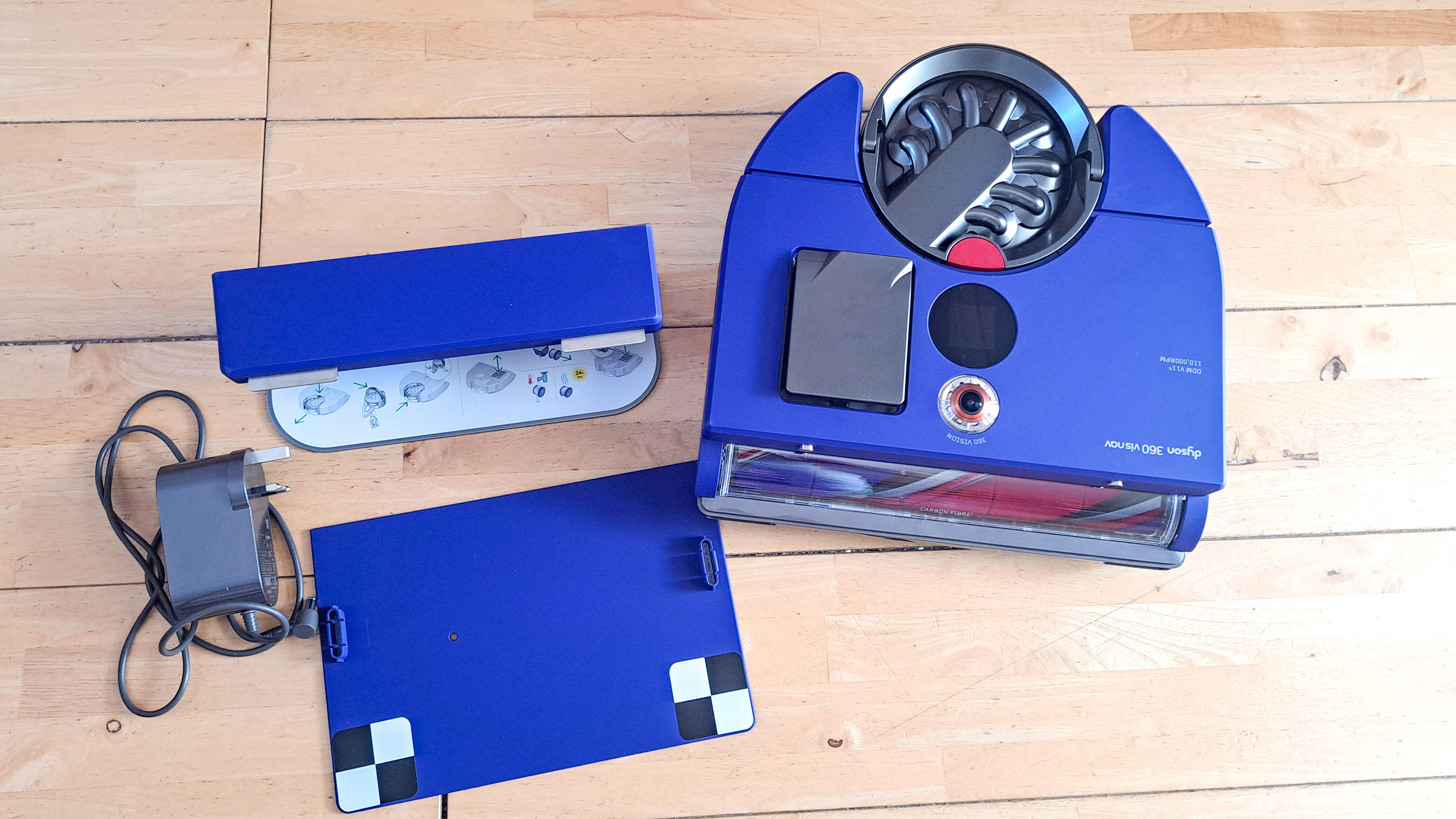
Dyson 360 Vis Nav: Price and availability
The Dyson 360 Vis Nav Robot Vacuum Cleaner is available to buy in the UK from Dyson.co.uk, and costs £1,399,99. U.S. pricing and availability is yet to be released.
3 things I like about the Dyson 360 Vis Nav
1. It sucks…but in a good way
The Dyson Vis Nav is a neat little powerhouse, and I was impressed with its cleaning proficiency. Of course, this is all down to its 65 aw suction, and Hyperdymium motor that spins at up to 110,000rpm, giving most robovacs a run for their money.
As I watched it navigate around my home, it was able to suck up dust and debris from my living room and bedroom hardwood floors with ease. It has a 360º camera at the top for precise visual navigation and comes with four, self-explanatory modes - Auto, Boost, Quiet and Quick. However, my preference was Auto since it adjusts the suction according to the amount of dust.
The Boost mode is great for quick jobs, but will likely exhaust your battery life quickly. In any case, the extra power comes in handy for dense build-ups of dirt, which was apparent when cleaning my carpet upstairs that had certainly seen better days. The Dyson Vis Nav was powerful to quickly lift out hard-to-shift, tangled hair, ingrained dirt and dust — giving my beige carpet a brighter and refreshed look.
When cleaning clumps of dust under the bed, its top light automatically switched on to help it see where to go for this back-breaking task. After going back and forth from under the bed (and after close inspection), the hubby and I were impressed with such a thorough, spotless clean.
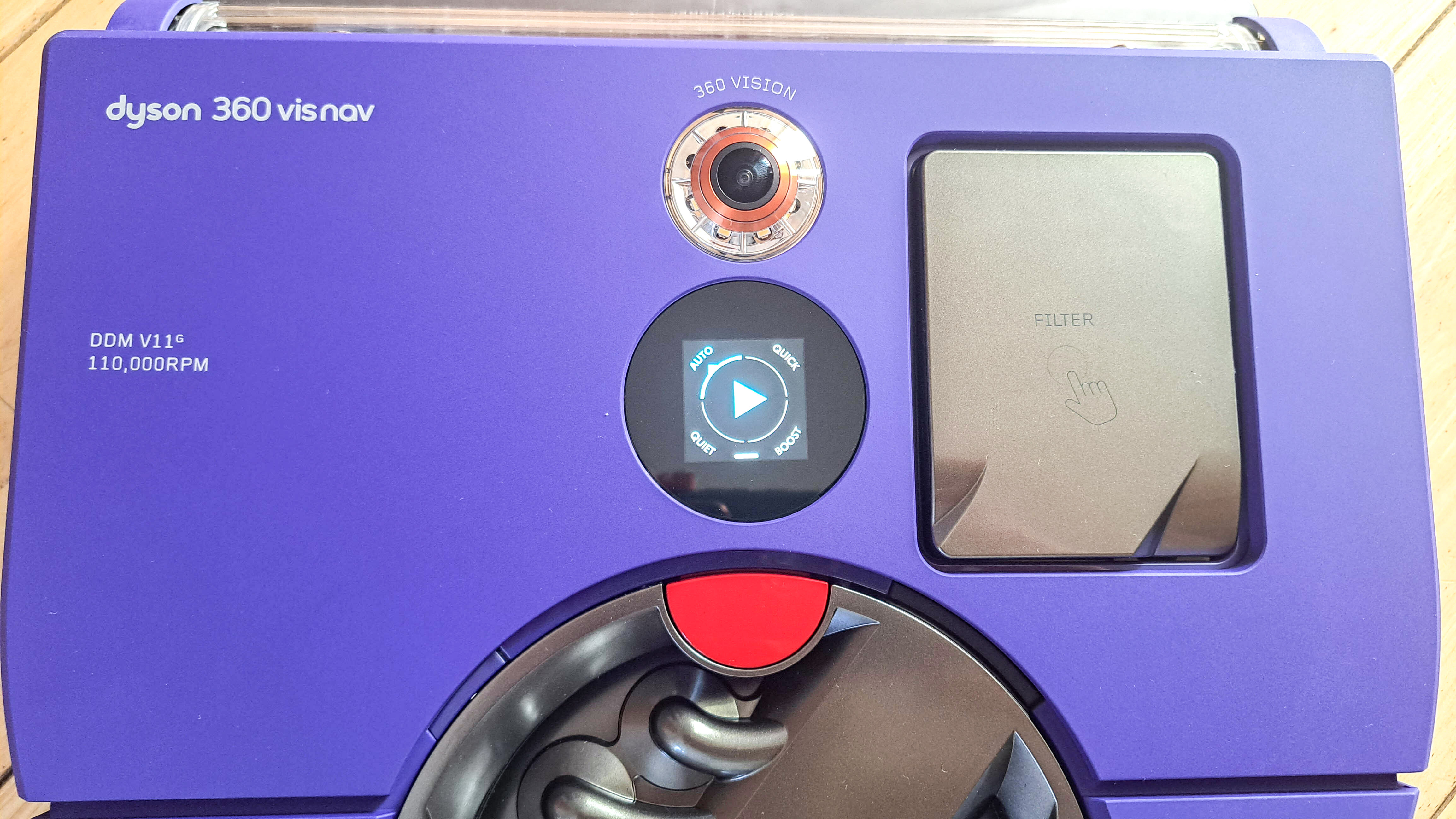
2. It focuses on the edges of the room
Another feature I liked about the Dyson Vis Nav (and one that is unique to a robovacs), is that once it completes a clean of the interior of the room, it automatically pops out its side duct to tackle the edges. This red soft silicone duct will then go up close along the edges or baseboards to suck up dirt and small debris, so nothing gets missed.

3. User-friendly app
The MyDyson app has a simple, clear interface and is super easy to use. Once downloaded you have complete control of your cleaning schedules, times, map creation and so much more - all at just a touch of a button. I
I particularly liked the dust map feature as it indicates where the most dirt in your room is, and area covered. Much like an infra-red, heat map, the yellow or brightest parts are the high dust, and purple are low dust. Needless to say, the dust under my bed was a sea of yellow!
As with most smart appliances, you can schedule cleaning runs while you’re away, create or remap a new room. This even lets you personalize your machine by naming it! What's more, you can link to your other Dyson devices via the app, which makes your Dyson portfolio more cohesive.
3 things I don't like about the Dyson 360 Vis Nav
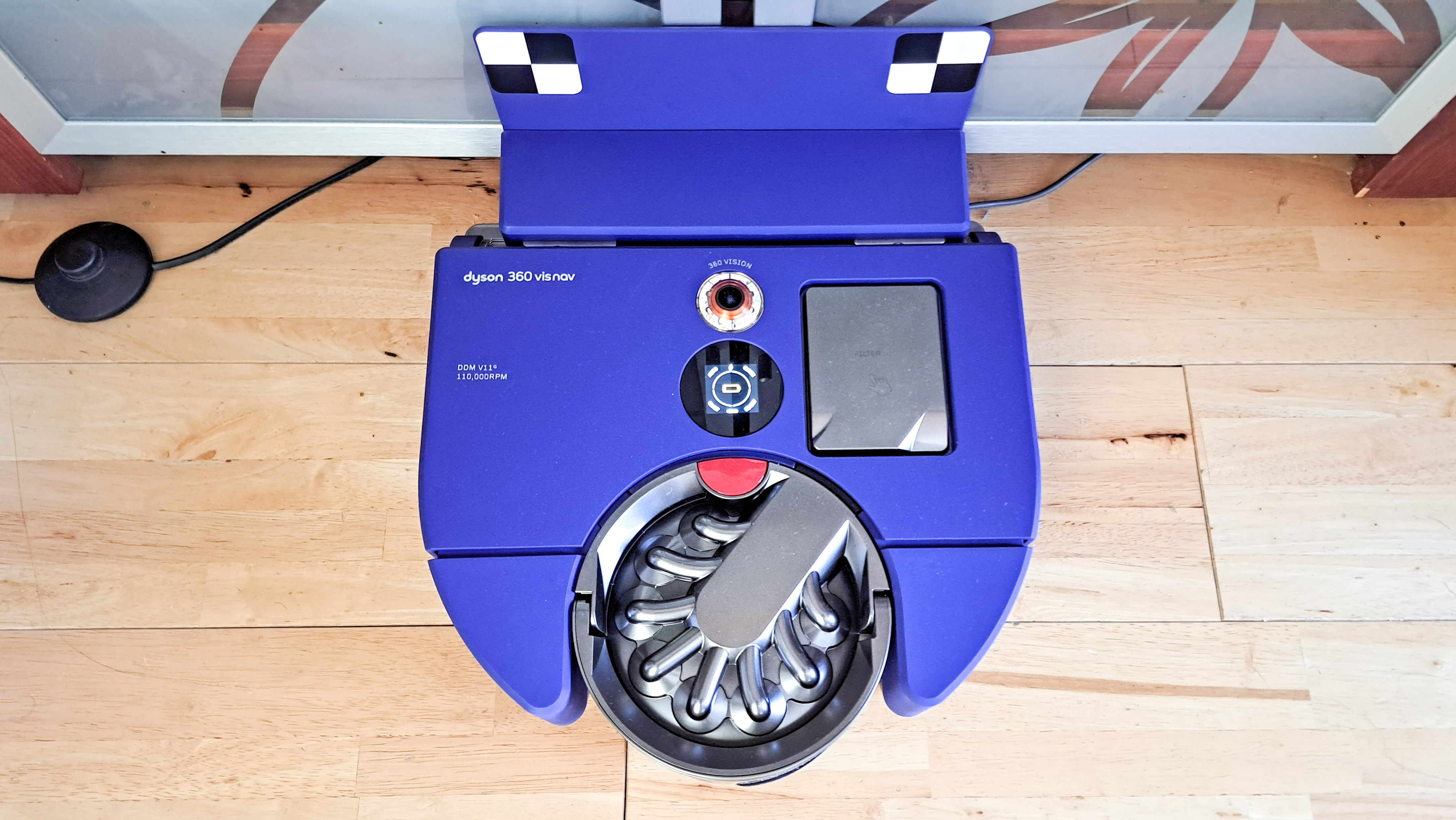
1. Navigation was a little sketchy
Although the Dyson Vis Nav successfully detected larger objects in the room, there were a couple of times that it bumped into things, like my son's keyboard stand, which it failed to stop at.
Similarly, after completing a clean and stating that it was returning back to the charger, it stopped halfway, despite being fully charged. I'd then have to manually take it back to its charging place. It wasn't too far, but it's certainly not something you'd expect from a high-level processor with advanced navigation.
In any case, the Dyson engineer did mention in our demo that improvements are always being made through their remote firmware updates, so this may no longer be an issue over time.
2. It didn't quite get into corners
The Vis Nav's D-shaped design worked well for edge-to-edge cleaning, but this also meant it couldn't quite get into the corners of the room. I noticed it had missed some of the dust in my bathroom corners, despite doing an excellent job on the baseboards and along the bathtub.
However, considering it has an extending side duct and no side brushes to scatter dirt (like other robot vacs), this can be overlooked. I guess you just have to get out your cordless vacuum to ensure no corners are cut!
3. Doesn't have a self-emptying or mop feature
This is just a matter of personal preference (and my laziness), but it doesn't have self-emptying, self-cleaning or mop capabilities. It's certainly something to consider when justifying the eye-watering price of the Dyson Vis Nav. This is especially the case when you can find robot vacuums such as the Roborock S7 MaxV Ultra and the new iRobot Roomba j9+ with a self-emptying base and mop for an equivalent price.
However, if you're not fussed about these additional features, and after supreme power and technology, (or simply an avid Dyson fan), then you'll enjoy using the Dyson Vis Nav.
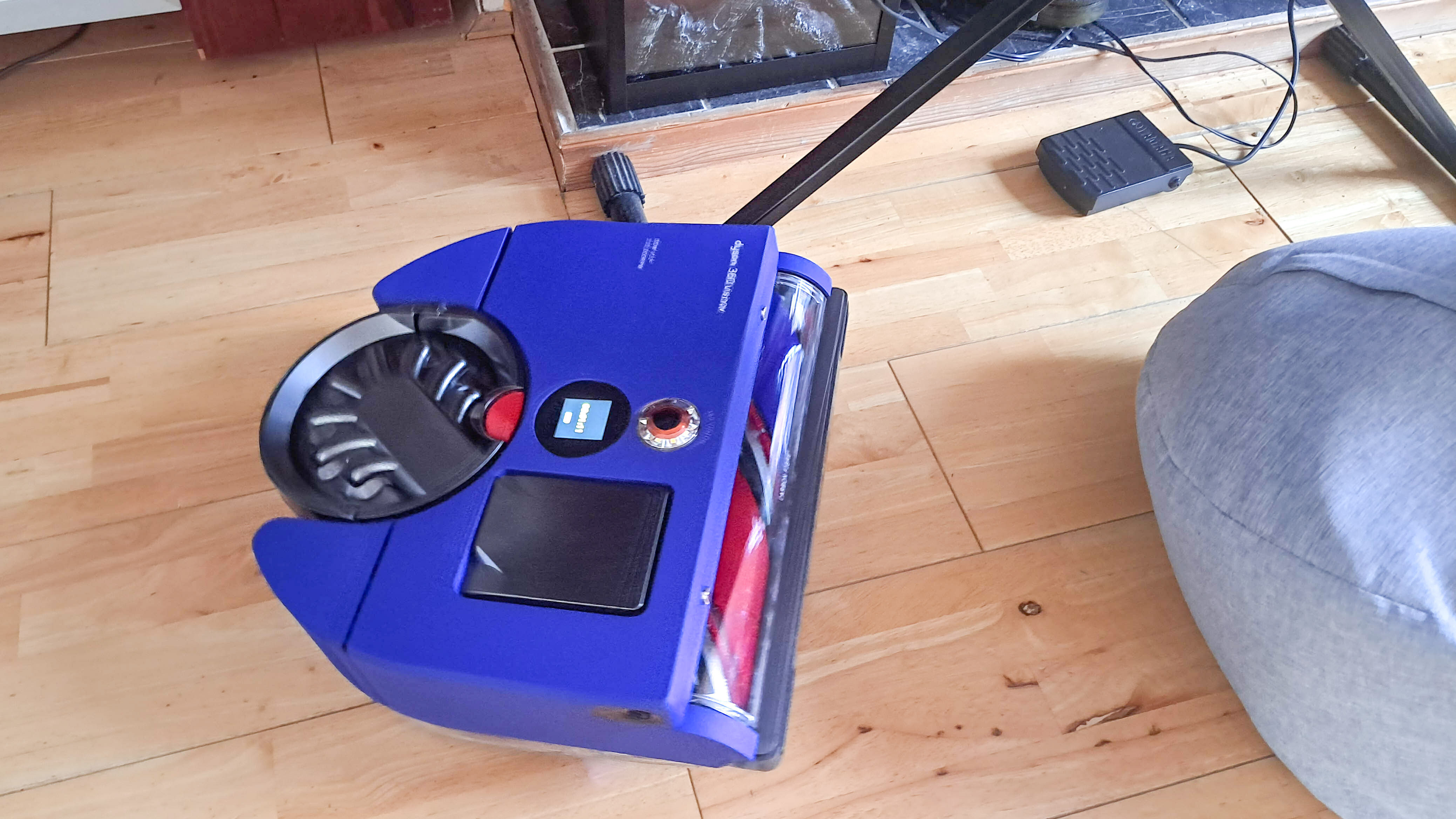
Should you buy the Dyson 360 Vis Nav?
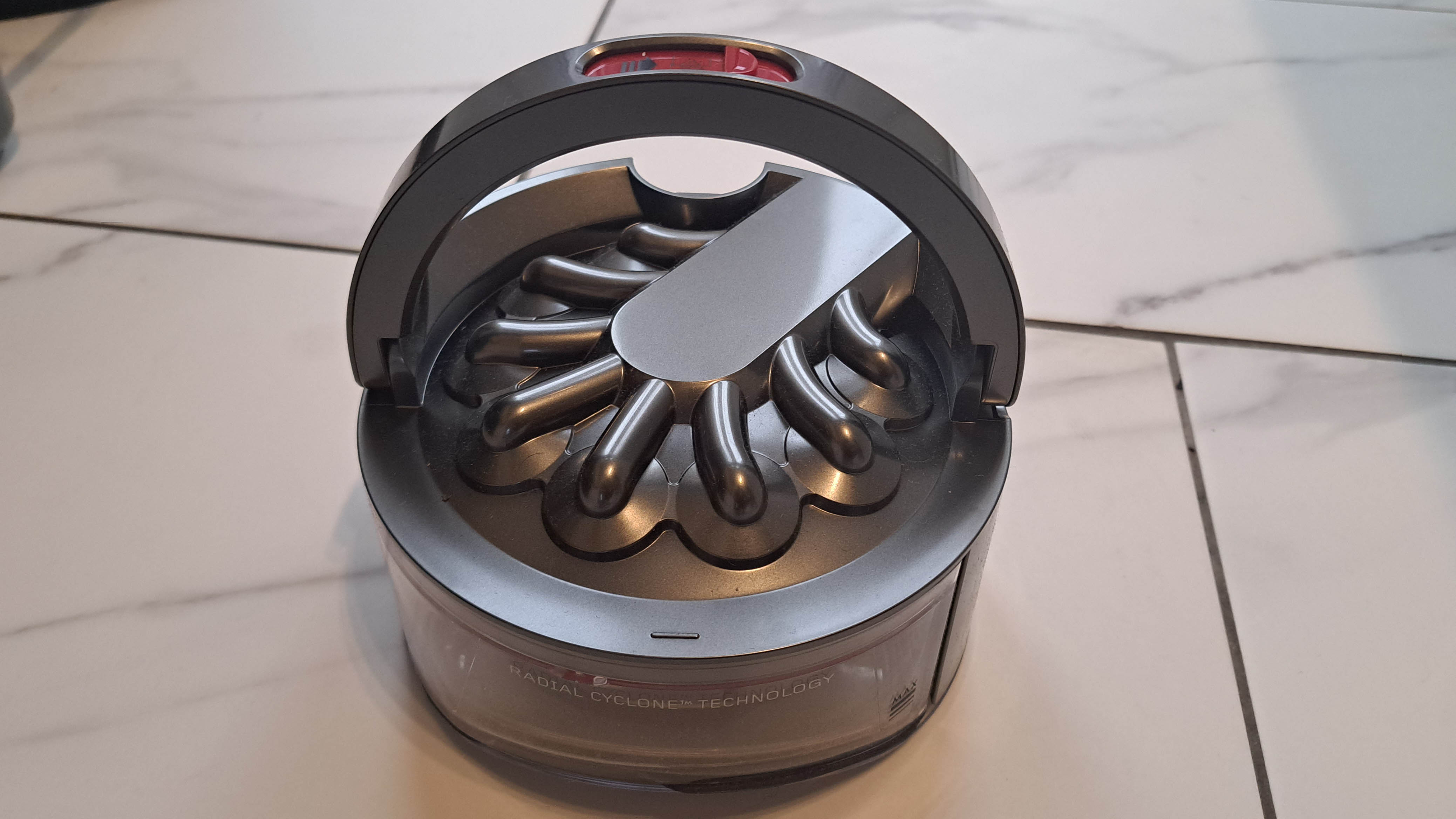
While we haven't run it through our usual gauntlet of tests for robot vacuums, there's no denying the impressive pick-up of the Dyson 360 Vis Nav, and I was impressed at how well it tackled my hardwood floors, tiles and carpet. It was simple to set up and use by choosing one of the four cleaning modes to suit your needs, and has a decent battery life as far as robot vacuums go.
The battery life promises an optimistic 50 minutes of cleaning time, but this all depends on the size of your home. I found that cleaning four medium-sized rooms in my home ran up about 35-40 minutes on Auto, which was sufficient enough for a decent clean.
What's more, it's probably the only robot vacuum cleaner that can get up close to your edges, baseboards and large furniture. And while there were a few navigation issues, these should be improved with the regular software updates that Dyson runs.
The Dyson Vis Nav may look bigger than standard robot vacuums, but is easy to handle and use. This made it easier to carry around the home using the handle on the dust canister. In fact, the round-shaped, dust canister makes a great design feature. I was surprised to see such a small container holding so much grime in just one cleaning session. But it was so easy to empty out into the trash can by simply pushing the release button to open the bottom lid. This canister can also be washed to keep it in top condition.
It is rather expensive though, despite lacking hybrid versatility of having a self-emptying base, self clean or mop features. So if you're after any of those things, and/or conscious of spending on a budget, you could find cheaper robot vacuums that offer those features. For instance, the new iRobot j9+ Roomba Combo is a self-emptying and auto-fill robot vacuum and mop for around the same price.
More from Tom's Guide
Sign up to get the BEST of Tom's Guide direct to your inbox.
Get instant access to breaking news, the hottest reviews, great deals and helpful tips.

As the Homes Content Editor, Cynthia Lawrence covers all things homes, interior decorating, and garden-related. She has a wealth of editorial experience testing the latest, ‘must-have’ home appliances, writing buying guides and the handy ‘how to’ features.
Her work has been published in various titles including, T3, Top Ten Reviews, Ideal Home, Real Homes, Livingetc. and House Beautiful, amongst many.
With a rather unhealthy obsession for all things homes and interiors, she also has an interior design blog for style inspiration and savvy storage solutions (get rid of that clutter!). When she’s not testing cool products, she’ll be searching online for more decor ideas to spruce up her family home or looking for a great bargain!
